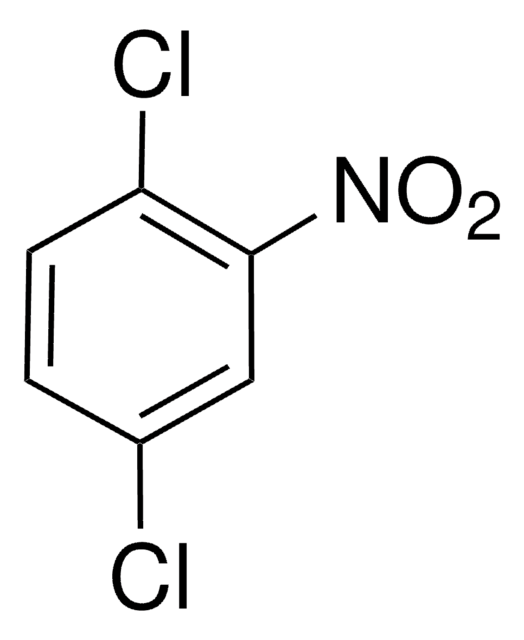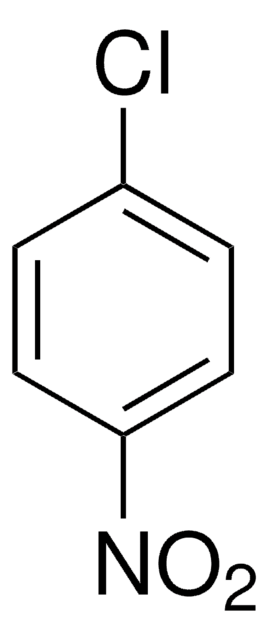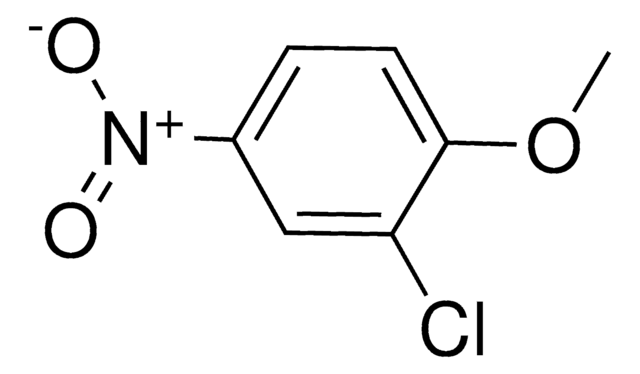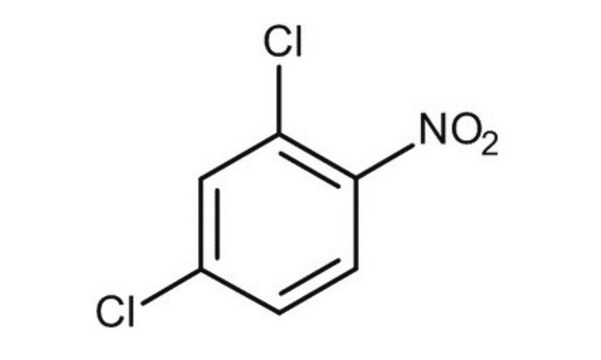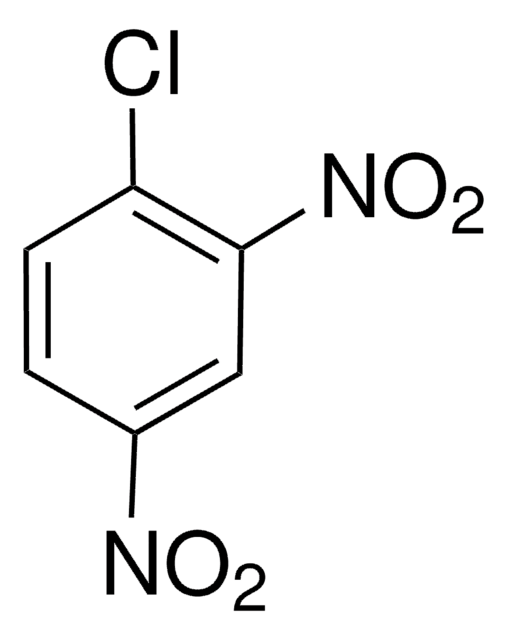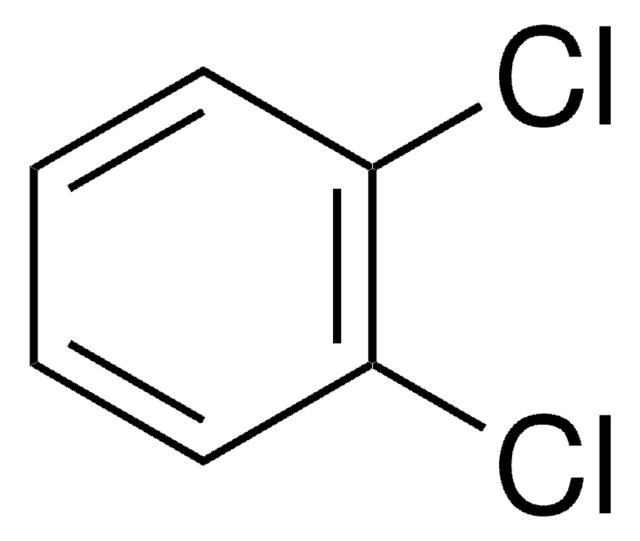D68800
1,2-Dichloro-4-nitrobenzene
99%
Synonym(s):
3,4-Dichloronitrobenzene, asym.-Nitro-o-dichlorobenzene
Sign Into View Organizational & Contract Pricing
All Photos(2)
About This Item
Linear Formula:
Cl2C6H3NO2
CAS Number:
Molecular Weight:
192.00
Beilstein:
1818163
EC Number:
MDL number:
UNSPSC Code:
12352100
PubChem Substance ID:
NACRES:
NA.22
form:
crystals
Assay:
99%
Recommended Products
Quality Level
Assay
99%
form
crystals
bp
255-256 °C (lit.)
mp
39-41 °C (lit.)
SMILES string
[O-][N+](=O)c1ccc(Cl)c(Cl)c1
InChI
1S/C6H3Cl2NO2/c7-5-2-1-4(9(10)11)3-6(5)8/h1-3H
InChI key
NTBYINQTYWZXLH-UHFFFAOYSA-N
Looking for similar products? Visit Product Comparison Guide
Related Categories
Signal Word
Warning
Hazard Statements
Precautionary Statements
Hazard Classifications
Acute Tox. 4 Oral - Eye Irrit. 2 - Skin Sens. 1
Storage Class Code
11 - Combustible Solids
WGK
WGK 3
Flash Point(F)
255.2 °F - closed cup
Flash Point(C)
124 °C - closed cup
Personal Protective Equipment
dust mask type N95 (US), Eyeshields, Gloves
Choose from one of the most recent versions:
Already Own This Product?
Find documentation for the products that you have recently purchased in the Document Library.
V Krishnakumar et al.
Spectrochimica acta. Part A, Molecular and biomolecular spectroscopy, 86, 196-204 (2011-11-23)
The vibrational spectra of 1,2-dichloro-4-nitrobenzene (DCNB) and 2,3,5,6-tetrachloro-1-nitrobenzene (TCNB) were computed using B3LYP methodology with 6-31G* basis set. The solid phase FTIR and FT-Raman spectra were recorded in the region 4000-400 cm(-1) and 4000-50 cm(-1), respectively. A similarity was achieved
Susila Sivapathasundaram et al.
Comparative biochemistry and physiology. Toxicology & pharmacology : CBP, 134(1), 169-173 (2003-01-14)
The ability of cattle and deer liver to catalyse xenobiotic conjugation reactions was investigated and compared with that of the rat. Marked differences in the activity of these enzymes were noted between the domestic animals and rats. Hepatic microsomal epoxide
L O Hansson et al.
Protein science : a publication of the Protein Society, 8(12), 2742-2750 (2000-01-13)
Two human Mu class glutathione transferases, hGST M1-1 and hGST M2-2, with high sequence identity (84%) exhibit a 100-fold difference in activities with the substrates aminochrome, 2-cyano-1,3-dimethyl-1-nitrosoguanidine (cyanoDMNG), and 1,2-dichloro-4-nitrobenzene (DCNB), hGST M2-2 being more efficient. A sequence alignment with
Toshiyuki Watanabe et al.
Archives of toxicology, 80(5), 250-257 (2005-10-21)
We have reported the existence of low glutathione S-transferase (GST) dogs whose GST activity to 1,2-dichloro-4-nitrobenzene (DCNB) as a substrate (GST-D activity) is quite low, and have also reported significant individual differences in dog liver GST-D activity. The dogs were
V A Catania et al.
Life sciences, 68(4), 467-474 (2001-02-24)
Gender-related differences and the regulation by testosterone of glutathione S-transferase were studied in rat jejunum. We analyzed enzyme activity and the relative content of GST subunits. Four experimental groups of adult rats were studied: normal males, castrated males, castrated males
Our team of scientists has experience in all areas of research including Life Science, Material Science, Chemical Synthesis, Chromatography, Analytical and many others.
Contact Technical Service